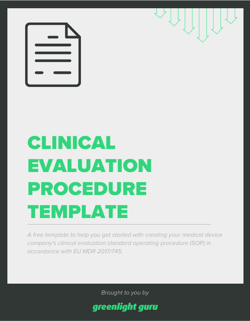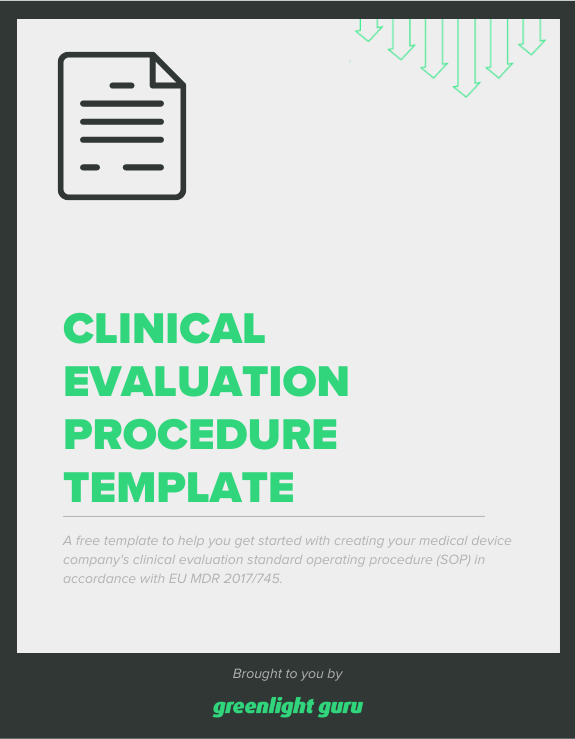MDCG 2020-5 Explained: How To Demonstrate Equivalency in the EU

MDCG 2020-5 is a guidance document put out by the European Commission (EC) to clarify the process for demonstrating equivalence with another CE marked medical device.
The guidance document is necessary because demonstrating equivalence in the EU is not a simple process. On top of that, EU MDR and MEDDEV 2.7/1 Rev. 4—a guidance document on clinical evaluation—use different language when discussing equivalence.
MDCG 2020-5 clears up some of the discrepancies between the regulations and MEDDEV guidance and offers further guidance on demonstrating equivalency in the EU.
So, let’s break down what’s inside MDCG 2020-5 and why you need to thoroughly understand this document if you want to claim equivalence in the EU.
What does MDCG 2020-5 cover?
A large part of MDCG 2020-5 is spent explaining and clarifying the differences in definitions of equivalence from MEDDEV 2.7/1 Rev. 4 and EU MDR.
MEDDEV 2.7/1 Rev. 4 is a guidance document released in 2016, one year before EU MDR. It offers guidance for carrying out a clinical evaluation in the EU. However, because it was released before MDR, there are differences between the guidance and the regulations that have caused some confusion when it comes to demonstrating equivalence.
MDCG 2020-5 explains these differences and then clarifies the prerequisites for determining equivalence in the EU. The document finishes with some guidance on the identification and use of clinical data.
What are the three characteristics for demonstrating equivalence in the EU?
Both MDR and MEDDEV 2.7/1 require that manufacturers consider three characteristics while determining whether a device is equivalent to their product: technical, biological, and clinical.
However, the criteria for these characteristics differ slightly between MEDDEV 2.7/1 Rev. 4 and MDR. So, MDCG 2020-5 lays out both criteria side by side and explains any significant differences and what they mean for demonstrating equivalence in the EU.
I’ve added the side-by-side images of the text from MDR and MEDDEV 2.7/1 Rev. 4 that are included in MDCG 2020-5, along with some of the salient points from the guidance.
However, the full text of MDCG 2020-5 gets even deeper into these differences, and anyone who wants to claim equivalency for their device in the EU should read the entire guidance document closely.
Technical Characteristics
|
MDR, Annex XIV Part A (3) |
MEDDEV 2.7/1 Rev. 4, Appendix A1 |
|
The device is of similar design; is used under similar conditions of use; has similar specifications and properties including physicochemical properties such as intensity of energy, tensile strength, viscosity, surface characteristics, wavelength and software algorithms; uses similar deployment methods, where relevant; has similar principles of operation and critical performance requirements. |
be of similar design, and used under the same conditions of use, and have similar specifications and properties (e.g. physicochemical properties such as type and intensity of energy, tensile strength, viscosity, surface characteristics, wavelength, surface texture, porosity, particle size, nanotechnology, specific mass, atomic inclusions such as nitrocarburising, oxidability), and use similar deployment methods (if relevant), and have similar principles of operation and critical performance requirements |
Source: MDCG 2020-5
-
Software equivalence. In the section on technical characteristics, MDCG 2020-5 makes it clear that it is “the functional principle” of a software algorithm that must be equivalent, as well as its clinical performance and intended purpose. “It is not reasonable to demand that equivalence is demonstrated for the software code.”
-
Similar vs. same. Under technical characteristics, MDR states that the devices must be “used under similar conditions.” MEDDEV 2.7/1 Rev. 4, however, states they must be “used under the same conditions of use.” MDCG 2020-5 clarifies that “the conditions of use shall be similar to the extent that there would be no clinically significant difference in the safety and clinical performance between the device in question and the device presumed to be equivalent.”
Biological Characteristics
|
MDR, Annex XIV Part A (3) |
MEDDEV 2.7/1 Rev. 4, Appendix A1 |
|
The device uses the same materials or substances in contact with the same human tissues or body fluids for a similar kind and duration of contact and similar release characteristics of substances, including degradation products and leachables |
Use the same materials or substances in contact with the same human tissues or body fluids. Exceptions can be foreseen for devices in contact with intact skin and minor components of devices; in these cases risk analysis results may allow the use of similar materials taking into account the role and nature of the similar material. |
Source: MDCG 2020-5
- Biological characteristic exceptions. MEDDEV 2.7/1 Rev. 4 creates exceptions for the use of “similar” materials in reviewing biological characteristics. MDCG 2020-5 makes it clear that these exceptions to not use the same materials “are NOT acceptable under the MDR.”
Clinical Characteristics
|
MDR, Annex XIV Part A (3) |
MEDDEV 2.7/1 Rev. 4, Appendix A1 |
|
The device is used for the same clinical condition or purpose, including similar severity and stage of disease, at the same site in the body, in a similar population, including as regards age, anatomy and physiology; has the same kind of user; has similar relevant critical performance in view of the expected clinical effect for a specific intended purpose. |
used for the same clinical condition (including when applicable similar severity and stage of disease, same medical indication), and used for the same intended purpose, and used at the same site in the body, and used in a similar population (this may relate to age, gender, anatomy, physiology, possibly other aspects), and not foreseen to deliver significantly different performances (in the relevant critical performances such as the expected clinical effect, the specific intended purpose, the duration of use, etc.) |
Source: MDCG 2020-5
- Same clinical condition or purpose. While MDR doesn’t state that the device must be used for the same medical indication, gender, and duration of use, MDCG 2020-5 makes clear that these requirements are covered by the MDR’s requirement that both must be used for the same clinical condition or purpose.
Remember, in order to demonstrate equivalence, you must be able to prove that your device is equivalent to the other in all three of these characteristics.
Demonstrating equivalence according to MDCG 2020-5
After covering the three characteristics, MDCG 2020-5 explains the prerequisites that must be fulfilled in order to demonstrate equivalence.
Again, this is a section that you should read carefully, but here are a few of the important points from Section 4:
- Manufacturers may not use parts of multiple different devices to claim equivalence to their device. So, you can’t pick an equivalent motor from one device, an equivalent steel rod from another, and an equivalent battery from a third and add them all together to form a Frankenstein’s equivalent device.
- You may use more than one equivalent device, “but each device shall be equivalent to the device under evaluation in all the listed technical biological and clinical characteristics.”
- During the process of demonstrating equivalence, you are expected to identify and disclose any and all differences between your device and the device(s) you are claiming equivalency with.
- For manufacturers of implantable and class III devices, there is an added stricture. MDR requires that if you are claiming equivalency with a device manufactured by another medical device company, you must have a contract in place that allows full access to that manufacturer’s technical documentation.
Getting that type of contract will be difficult, if not impossible, for most manufacturers. So, if you can’t obtain that technical documentation, you’ll need to use clinical investigations to prove the safety and clinical performance of your device, rather than going the equivalence route.
Use of clinical data according to MDCG 2020-5
Sections 5 and 6 of MDCG 2020-5 deal with the data you may or may not use for demonstrating equivalence.
Section 5 covers data from similar devices, which are defined in MDR as “a set of devices having the same similar intended purposes or a commonality of technology allowing them to be classified in a generic manager not reflecting specific characteristics.”
The guidance states that there are some cases where you will not be able to demonstrate equivalence with a similar device, but the data from that device may still be useful:
-
Ensuring that the risk management system is comprehensive by identifying relevant hazards and clinical risks.
-
Understanding the state of the art, the natural course of disease and alternative available treatment options.
-
Helping to define the scope of the clinical evaluation, by identifying any design features in similar devices that pose special performance or safety concerns.
-
Provide input for clinical investigation design or post-market clinical follow-up design, and the post-market surveillance system.
-
Identification of relevant and specified clinical outcome parameters for the intended clinical benefits, based on the published clinical data pertaining to the similar device(s).
-
To define minimum requirements for a quantified clinical benefit that is considered clinically relevant, and/or to identify acceptable occurrence rates of risks and adverse events.
Finally, Section 6 notes that all devices must undergo a clinical evaluation in accordance with MDR. During this evaluation, you must identify all clinical data, both favorable and unfavorable. However, this applies to both your device and the device that you’re attempting to demonstrate equivalence with.
If you’re dealing with clinical data, it will need to undergo the data appraisal and data analysis steps in the clinical evaluation process. You can find guidance on those steps in Sections 8-10 of MEDDEV 2.7/1 Rev. 4.
FREE TEMPLATE: Click here to download your free PDF copy of our Clinical Evaluation Procedure Template.
Greenlight Guru simplifies meeting all your regulatory requirements
Demonstrating equivalence in the EU is a complex task that requires detailed documentation. With so much on the line, you can’t afford to have documents literally piling up on a desk somewhere.
Greenlight Guru Quality gives you a secure, cloud-based document management system that acts as your single source of truth throughout the product lifecycle. Our platform allows you to access up-to-date versions of documents at a moment’s notice, streamline approval processes, and remove silos within your company.
If you’re ready to see what a purpose-built platform can do for your medical device company, then get your free demo of Greenlight Guru today →
Laura Court is a Medical Device Guru and Mechanical Engineer who loves learning about new technology and sharing her experiences with others. She has experience in New Product Development and Manufacturing with both small and large companies. Having managed products through their full product lifecycle into post...
Related Posts
MDCG 2020-6 Explained: Sufficient Clinical Evidence for Legacy Medical Devices in the EU
Applying for International Patents as a Medical Device Company
How are Medical Devices Classified under EU MDR?
Get your free PDF
Clinical Evaluation Procedure Template











